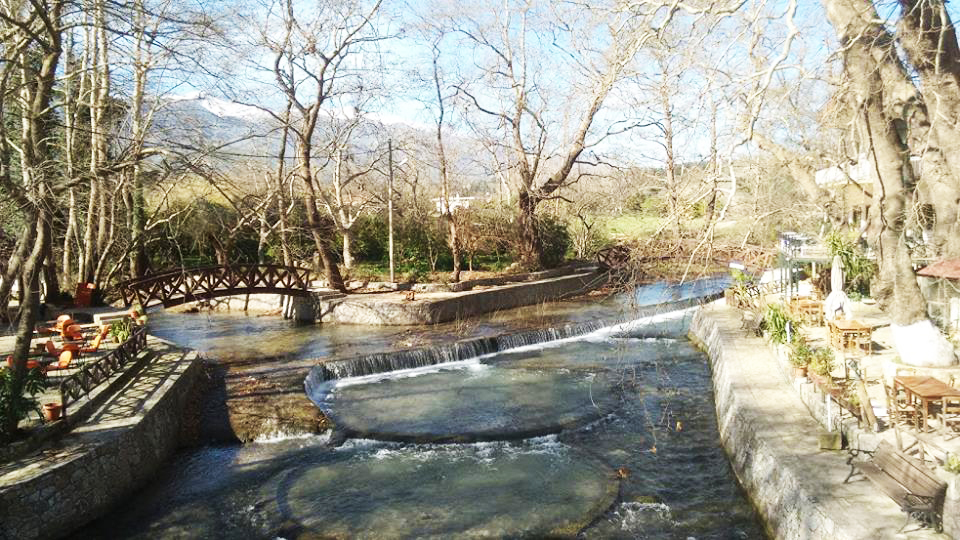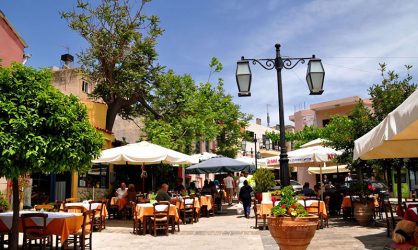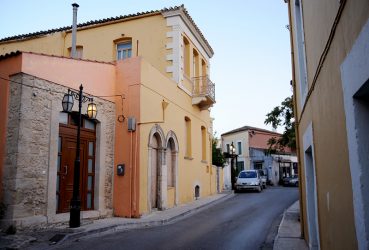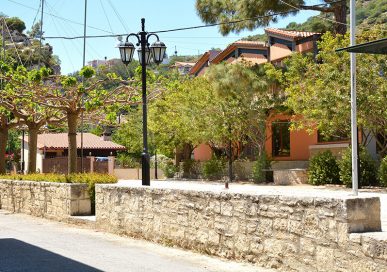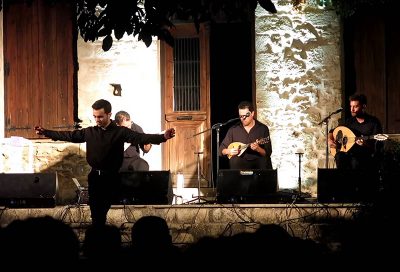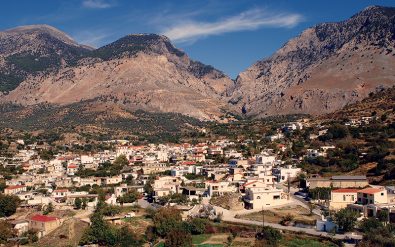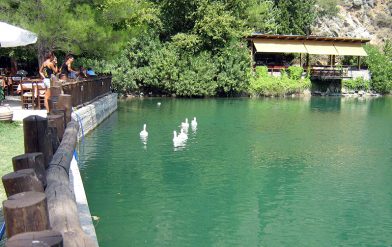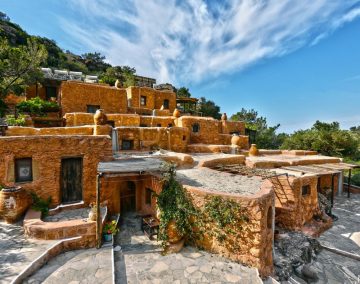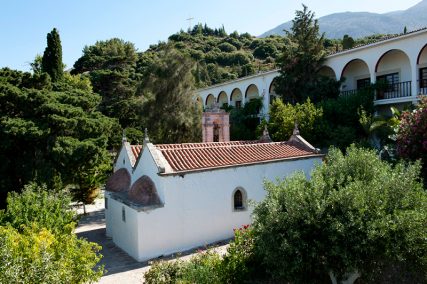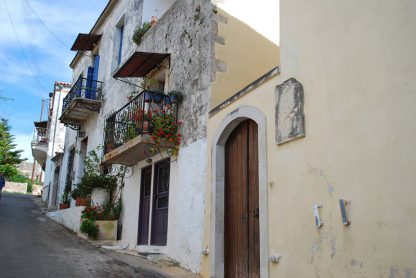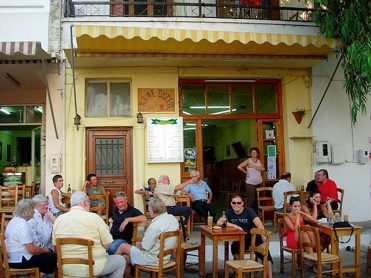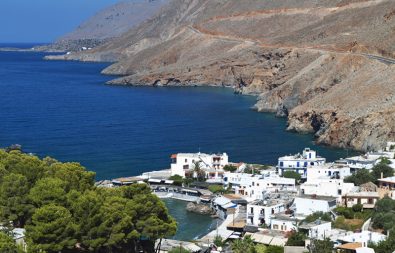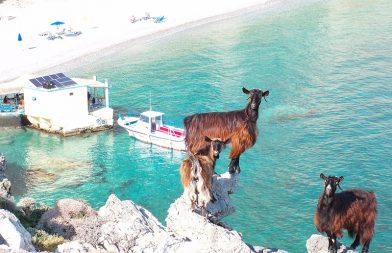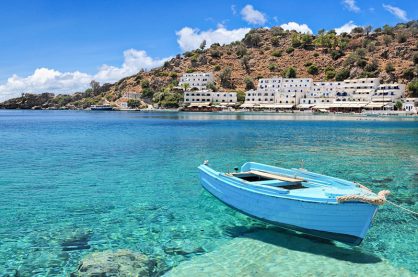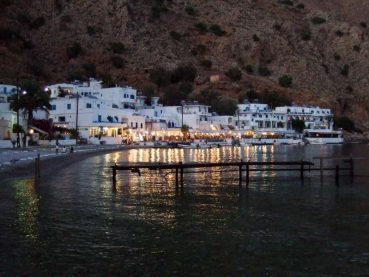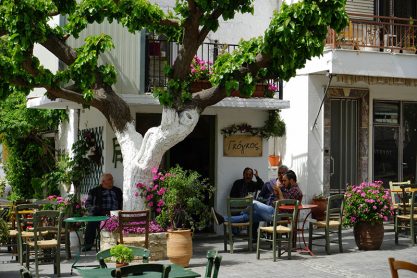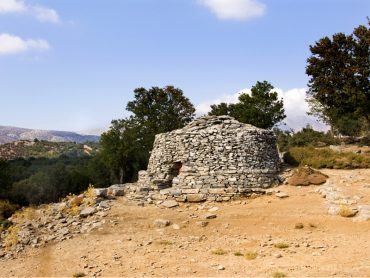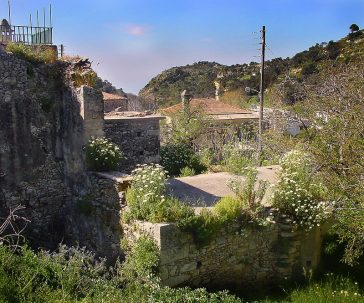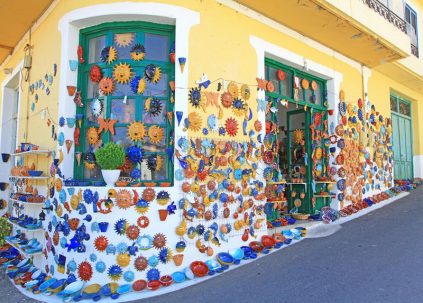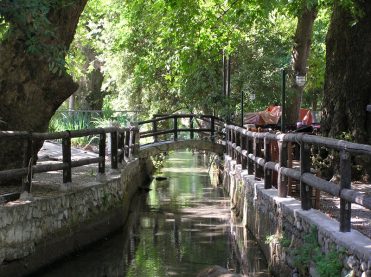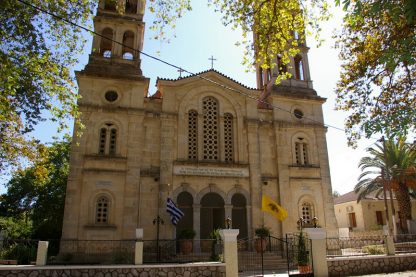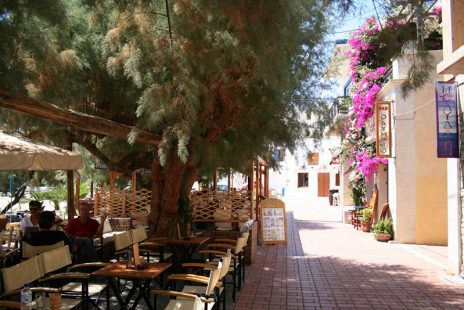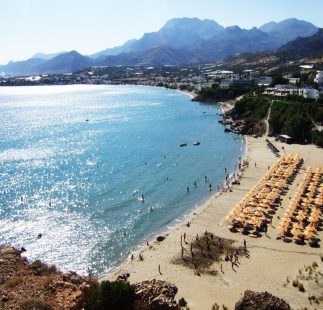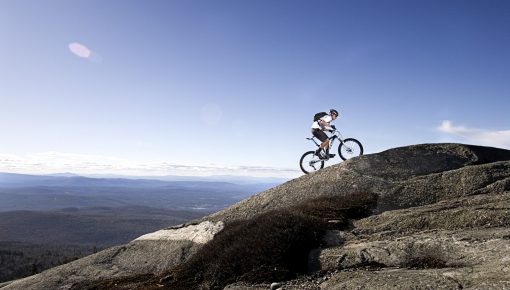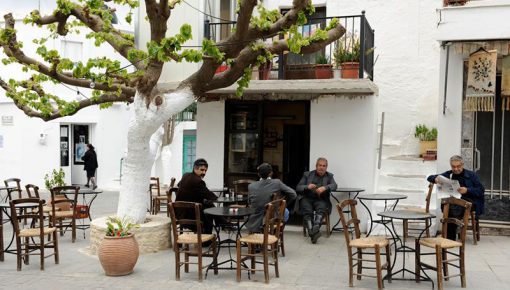If you explore the inner land of Crete, you will find yourself in the wonderful Crete villages, some of them photographed, and others less known. Some of them are located by the sea, and others, in the roots of Psiloritis. But, any villages you decide to visit during your holidays in Crete, you can be sure that they will enchant you with their beauty and the warm hospitality of their residents.
Planning your next holidays? Enjoy the amazing Island of Crete with a Holiday Crete Villa.
Crete villages await you to explore them!
1) Archanes, Heraklion
The reputation of Archanes has spread all over Europe! While entering the village, you will see the imposing neoclassical building of the Centre of Environmental Education and slightly further, the all-white church of St. Mary. The village features atmospheric neighborhoods with well-preserved houses painted in cheerful colors. As the exploration continues, the visitor learns more and more about Archanes. The Folklore Museum, the Archaeological Museum, the Sculpture Workshop, the Museum of Cretan History and Tradition are the highlights that you should not miss!
In Ano Archanes, you will learn everything about the production of olive oil. The yards of the houses are also a good reason for someone to visit the village, as they are full of flowers, like oasis. The whole village has an aura different from the other Crete villages due to the immense vineyards, the cool springs and its picturesque square.
2) Houdetsi, Heraklion
This village, in the mountains of Heraklion, is flooded during the summer with the voices of young people. The locals do not lose any chance to organize celebrations and festivals in the square of the village with their fingers deftly dancing over the strings of the lyre. Houdetsi festival is one of the most popular Crete festivals. The itinerant Irish artist Ross Daly chose this place 35 years ago to set his own musical paradise and erect the “Labyrinth” musical workshop. Walking on the streets of Houdetsi, you will feel the energy of the village, created by the intact mansions, and the cool breeze coming from the ravine of the Monastery of Spiliotissa.
3) Zaros, Heraklion
The highlight of Zaros village is the watermill standing there for more than 400 years. According to the residents, Zaros is a blessed village on the foothills of Psiloritis. Fertile fields and orchards and with an artificial pond, full of trouts, creates a unique setting. Above the lake are reflected the imposing rocks of Psiloritis and is considered one of the natural landmarks of Crete. Starting from the lake, walk the path that leads you to the gorge of Agios Nikolaos (St. Nicholas) where the waterfalls and green landscape will impress you. The gorge ends to the amazing forest of Rouvas. Under the oaks there are wooden tables and water, ideal place to enjoy a snack and have a rest on your return.
4) Ano Asites & Kato Asites, Heraklion
Vineyards, olive groves and vineyards again. This is the route that you should follow until you reach Ano & Kato Asites the eastern foothills of Psiloritis. Two of the most traditional Crete villages are perched there, at an altitude of 450 meters above sea level. When you get there, it is worth visiting the Monastery of St. John Gorgolaini. It is among the oldest in Crete, since at least the 13th century. In the courtyard, there are two natural miracles: a plane tree and a cypress tree, which have been declared preserved sights. The village features a cultural association, a library and a folklore museum. Do not hesitate to sit in its traditional cafe along with the locals and learn about the caves, the churches and the customs of the village.
5) Vamos, Chania
Vamos is one of the most “virgin” Crete villages, which preserves its history and keeps the traditions alive. Olive groves and orchards create a Tuscan scenery. The surrounding cottages are made of stone, clay and wood. As you walk in the old neighborhood with its stone streets, secret corners and beautifully restored houses, locals will treat you raki and a bit of “apaki”. In Vamos, you will learn how to make the delicious Cretan cheeses and other specialties of Cretan cuisine. In Vamos, also, you will see the moon coming over the White Mountains, while you listen to serenades for unfulfilled loves.
6) Chora Sfakion, Chania
It will take you about 90 min. to get from Chania to Sfakia. You live behind the Aegean Sea and you reach the Libyan Sea, following the road that passes through the Cretan “Wild West”. The landscape is captivating, almost scary. Chora Sfakion is the capital of the Municipality of Sfakia: an inaccessible and rugged area, surrounded by the steep slopes of the White Mountains and the numerous canyons formed therein. The village is built at the end of Imbros gorge and features two ports, where are moored the boats departing to Agia Roumeli, Loutro and the island of Gavdos. In this place, you will meet the proud Sfakians. It is a place full of pride, love for Crete and awe for its wild beauty.
7) Loutro Sfakion, Chania
You need 15 min. to get to Loutro village from Sfakia, a South Crete boat trip that you will never forget. In this settlement between the rocks, one feels that has discovered the summer paradise of southern Crete: secluded, peaceful, with bars, taverns, and shops. There is always a risk to be enchanted by the full moon that paints the entire gulf in silver colors. It is the time when the return to civilization seems to you a really unpleasant option.
8) Anogia, Rethymno
Anogia is located on top of the mountain and is the last village you meet while ascending Psiloritis mountains. As you move up, you will see the “mitata”, the stone houses of shepherds. In Anogia, the housewives have their balconies filled with flowers. In the square of the village, there are cafes where the locals will definitely treat you. If you reciprocate the treat, they will put you in their hearts forever. If you visit Anogia, you’ll understand why it differs from the other Crete villages.
9) Margarites, Rethymno
If you visit Margarites village, you will hear the locals call it “the village of jars”, as it features a long tradition in pottery. Wandering the streets, you will see the big clay pots out of the houses doors and a few tourists to enter the pottery shops. The yards are flooded with flowers, the evening breeze is cool, raki is icy and the life in Margarites is simple and nice. Perched at an altitude of 300 meters, in the northern foothills of Psiloritis, the village is 27 km. from Rethymnon. Ancient monasteries, towers, paths, chapels hidden in caves and canyons and a fertile valley that stretches in front of the village, compose one of the most picturesque settings among Crete villages.
10) Armeni, Chania
The village of Armeni in Apokoronas, Chania, is popular for its fountains sources and the dense vegetation. At the entrance of the village, you will see a particularly interesting watermill, declared a historical monument. It is also worth visiting the church of St. John the Theologian of the Venetian period, restored by the Archaeological Service and the youngest church of St. Nicholas. In Armeni, under the shade of huge trees, gushing rich springs forming “Xydas” river. The abundant waters irrigate the whole area, which is planted with fruit trees, vegetables and flowers, a heavenly landscape.
During the summer months, the stay here is pleasant due to the cool climate. There are restaurants and cafes, where visitors can enjoy food, drink or coffee even on the hottest summer days, from the morning, until the night.
11) Makrygialos, Lasithi
Makrygialos village is located 25 km. from Ierapetra. Until the 70s, the small seaside village was a poor and neglected region in South Crete. There were a few store rooms on the seashore, where locals used to store various products for export: oil, sultanas, carob, grain and domestic animals. But since 1980, this virgin village of the Libyan Sea has become a favorite destination for lovers of unpretending beauty. The calm waters of the sandy beach of the settlement are very warm, even in late October.
